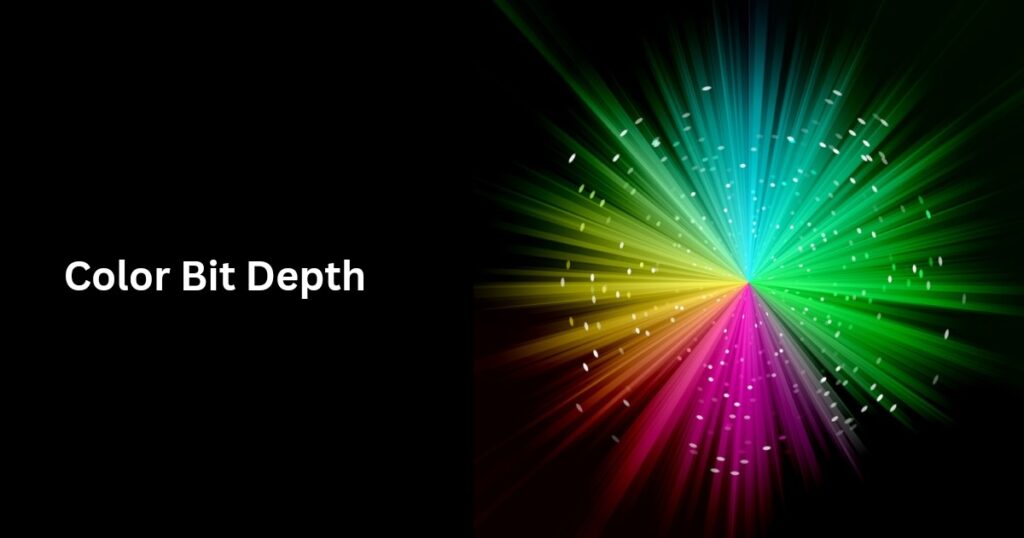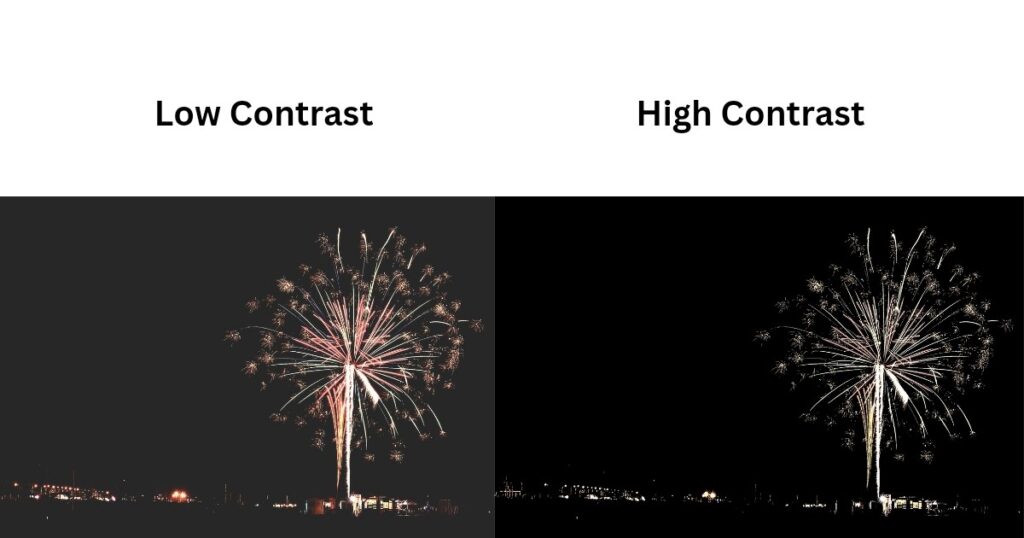Where Contrast Becomes a Battleground: VA LCD vs OLED TVs

From the exceptionally bright mini-LED TVs using VA panels to the high-contrast OLED displays, there’s a lot to consider while deciding to buy one of them.
When comparing OLED and VA LCD TVs, it’s common to think of OLEDs as having superior contrast and VA LCDs as offering higher brightness.
While this is generally true, it’s not always the case, especially with ongoing advancements in both technologies.
With that in mind, let’s dive into the details of OLED and VA LCD displays to determine which one is better suited for overall use. We’ll start with a brief overview of each technology.
VA LCD TV
VA, which stands for “Vertical Alignment”, is a type of display panel used in LED LCD TVs where the liquid crystals are aligned vertically when no voltage is applied to them.
Thus, in the original state, they block most of the light coming from the LED backlight, which allows VA panels to achieve a high native contrast ratio.
When an electric current is applied, the crystals rotate within the vertical plane, adjusting to let light through as needed, quite similar to how the curtains on a window open and close.
However, because their movement is confined to the vertical plane, VA panels struggle to distribute light evenly across wider angles.
Unlike IPS panels, which can maintain image quality from wider angles, VA panels tend to lose the color accuracy when viewed from sides.
As a result, while they offer strong contrast, it comes at the expense of narrower viewing angles.
OLED TV
OLED stands for “Organic Light-Emitting Diode”, which refers to tiny organic LEDs embedded directly into the screen.
Each of these LEDs is as small as a single pixel and acts as its own light source, thus eliminating the need for a separate backlight.
Because these individual pixels can turn off completely when needed, OLED panels can produce completely dark blacks, resulting in an infinite contrast ratio.
This ability of OLEDs enables them to deliver absolutely stunning and immersive picture quality.
OLED vs VA LCD: Which TV Tech Reigns Supreme?
Now that we have got a basic understanding of OLED and VA LCD TVs, let’s move on to compare them across various factors.
We’ll also explore and compare the different types of OLED and VA LCD TVs currently available on the market.
To begin, let’s start with one of the most critical aspects of picture quality, contrast.
Contrast
As we just discussed, OLED TVs have almost infinite contrast ratio.
They produce true blacks in dark scenes and thus, enhance the overall picture realism.
Bright objects appear sharp against deep black backgrounds.
That said, VA LCD TVs don’t offer uniform contrast and it varies significantly across their models.
However, VA panels do offer better contrast than IPS panels.
Furthermore, VA LCD TVs equipped with mini-LED backlighting offer significantly improved contrast over standard VA models.
While they still can’t match the perfect contrast levels of OLEDs, they do come close.
That said, even the best VA LCD TVs, such as most Samsung’s Neo QLED and Sony’s mini-LED TVs can show minor blooming due to their reliance on a few thousands of local dimming zones, compared to the millions of self-emissive pixels in OLEDs.
Still, these numerous dimming zones manage light very well, and aim to deliver an experience that closely rivals OLED performance.
Color Gamut
Color gamut refers to the range of colors a TV can display at a specific brightness level.
OLED TVs are known for delivering a wide and highly accurate color gamut, as each individual organic pixel can produce its own color.
QD-OLED TVs take this a step further by using quantum dots, which allow for the reproduction of even purer red and green tones, resulting in a wider color gamut than standard OLEDs.
Similarly, VA LCD TVs that incorporate quantum dots with mini-LED backlighting, such as Samsung’s Neo QLED models, also offer an impressive color gamut.
Again, this is made possible by the emission of pure color tones by quantum dots and the precise control over lighting provided by numerous local dimming zones.
On the other hand, more budget-friendly VA LCD TVs that lack these advanced features tend to fall short in both color gamut and accuracy.
Brightness
OLED TVs generally have a limit on peak brightness as pushing their organic pixels too hard can speed up their degradation.
In contrast, VA LCD TVs use powerful LED backlights with inorganic pixels, allowing them to achieve higher brightness without any risk of damage.
However, newer models like QD-OLEDs and MLA-based WOLEDs have greatly improved brightness, even surpassing many VA LCD TVs.
That said, the brightest mini-LED VA LCDs, which use thousands of tiny LEDs, can outshine any OLED in brightness.
On the flip side, budget VA TVs with edge-lit backlights often have lower brightness than OLEDs.
Color Volume
Color volume refers to the full range of colors a TV can display across different brightness levels.
It combines both its color gamut and peak brightness.
QD-OLED TVs offer one of the widest color gamuts among all OLED and LCD TVs, and when paired with their high brightness, they deliver an exceptionally large color volume.
This allows them to render highlights with accurate brightness and vivid color.
Similarly, top-tier VA mini-LED TVs that use quantum dot technology also produce a large and pure color volume, thanks to their wide color gamut and very high peak brightness.
WOLEDs provide decent color volume as well, though generally lower than QD-OLEDs and VA mini-LEDs, primarily due to their lower peak brightness.
However, WOLEDs equipped with MLA technology having much enhanced brightness also deliver high color volume.
HDR Performance
OLED TVs generally offer superior HDR performance compared to most VA LCDs, mainly because of their inherent high contrast and a wide color gamut.
That said, the top-tier OLED models like QD-OLEDs and MLA-based WOLEDs can reach high brightness levels in HDR and SDR both, thus maintaining accurate color reproduction at specific brightness levels.
QD-OLEDs are especially ideal for dark room viewing, delivering vivid, lifelike and more punchy colors.
On the other hand, MLA-based WOLEDs handle glare better and maintain deep black levels even in bright environments.
The VA mini-LED TVs with quantum dots can compete with the above two different OLED strongly in HDR performance.
These TVs are extremely bright and capable of displaying vibrant colors with much precision.
In displaying SDR content, they can be the brightest of all. Like QD-OLEDs, they can make highlights stand out impressively.
However, because they typically have lower native contrast as compared to OLEDs, they struggle to render the details in dark scenes as effectively as the OLEDs.
Viewing Angles
OLED TVs can turn individual pixels on or off across the entire screen.
This allows them to maintain consistent picture quality all across the screen and thus, achieve exceptionally wide viewing angles.
In contrast, VA LCD TVs typically offer optimal picture quality only when viewed from directly in front of the screen.
As you move off-center, image quality tends to degrade, with reduced color accuracy and contrast.
While some newer VA panels have improved viewing angles a bit, this often comes at the cost of reduced contrast.
That said, the viewing angles on an IPS LCD or OLED TV are always better than those on a VA LCD TV.
Response Time
OLED TVs offer extremely fast response times as their pixels can change color almost instantly.
This makes them ideal for fast-paced content like action movies or gaming, with almost no motion blur.
In contrast, VA LCD TVs rely on an LED backlight, and the light has to pass through multiple LCD layers before reaching the screen.
This process introduces a delay, resulting in slower response times, typically around 4 to 5 milliseconds or more.
As a result, VA panels may show some considerable motion blur while playing games with high refresh rates or during high-speed scenes.
Gaming
Input lag is a crucial factor while gaming on a TV.
It refers to the delay between pressing a button (such as on a controller or keyboard) and seeing the corresponding action on screen.
It depends on delay encountered in various components, including the gaming console or PC, peripherals, cable type, and not just the TV’s response time only.
Fortunately, most modern OLED and VA LCD TVs offer low input lag, typically around 10 milliseconds.
This ensures smooth and responsive gaming on both the TV types.
However, OLEDs still hold an advantage in fast-paced games due to their near-instant response times and minimal motion blur.
Lifespan
OLED TVs use organic pixels that can degrade over time, although this usually happens after many years.
However, if a static image, like a bright channel logo or a video game HUD, remains on the screen for extended periods without changing the content, there’s a risk that the affected pixels may suffer from burn-in due to prolonged stress.
That said, with normal, varied viewing habits and modern OLED features such as logo dimming and pixel refresh, the likelihood of experiencing burn-in is very low.
Still, if you want to eliminate the risk entirely, a VA LCD TV would be a safer choice.
Which TV Tech Is Worth Your Money – VA LCD or OLED?
We’ve covered a lot about VA LCD and OLED TVs, and to sum it up: QD-OLED TVs stand out as the best all-round option, especially for dark room viewing.
They offer ultra-fast response times, infinite contrast with true blacks, and excellent shadow detail.
On top of that, their high color volume and ability to produce bright, vivid colors make highlights truly shine.
However, in bright rooms, QD-OLEDs may struggle to maintain that picture quality as their black levels can appear raised due to ambient light.
In such environments, MLA-based WOLEDs are a better choice.
They deliver pure whites, and still maintain deep blacks.
Moreover, their higher brightness levels help combat glare very effectively.
Alternatively, VA-based mini-LED TVs using quantum dot technology are also excellent for bright rooms.
They can reach very high brightness levels and reproduce punchy highlights similar to QD-OLEDs, making them a strong contender for well-lit spaces.
However, they may not capture dark details as accurately as OLEDs.
The three top options, MLA-based WOLEDs, QD OLEDs, and VA-based mini-LED TVs with quantum dots have comparable prices, though all tend to be quite expensive.
So, let’s explore some other alternatives.
Standard OLEDs or WOLEDs also perform very well in dark or dimly lit rooms, offering true blacks and excellent reflection handling, resulting in an impressive HDR experience at a lower cost than the previously mentioned OLED types.
If you want a more budget-friendly choice, a VA LCD TV with decent local dimming and good contrast can be a nice pick.
Last but not the least, if you have a wide seating arrangement and often watch TV with family or friends, an OLED with wide viewing angles is ideal.
On the other hand, if you want to avoid any risk of burn-in on your TV regardless of how you use it, a VA LCD TV is the safer option.


